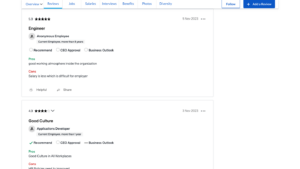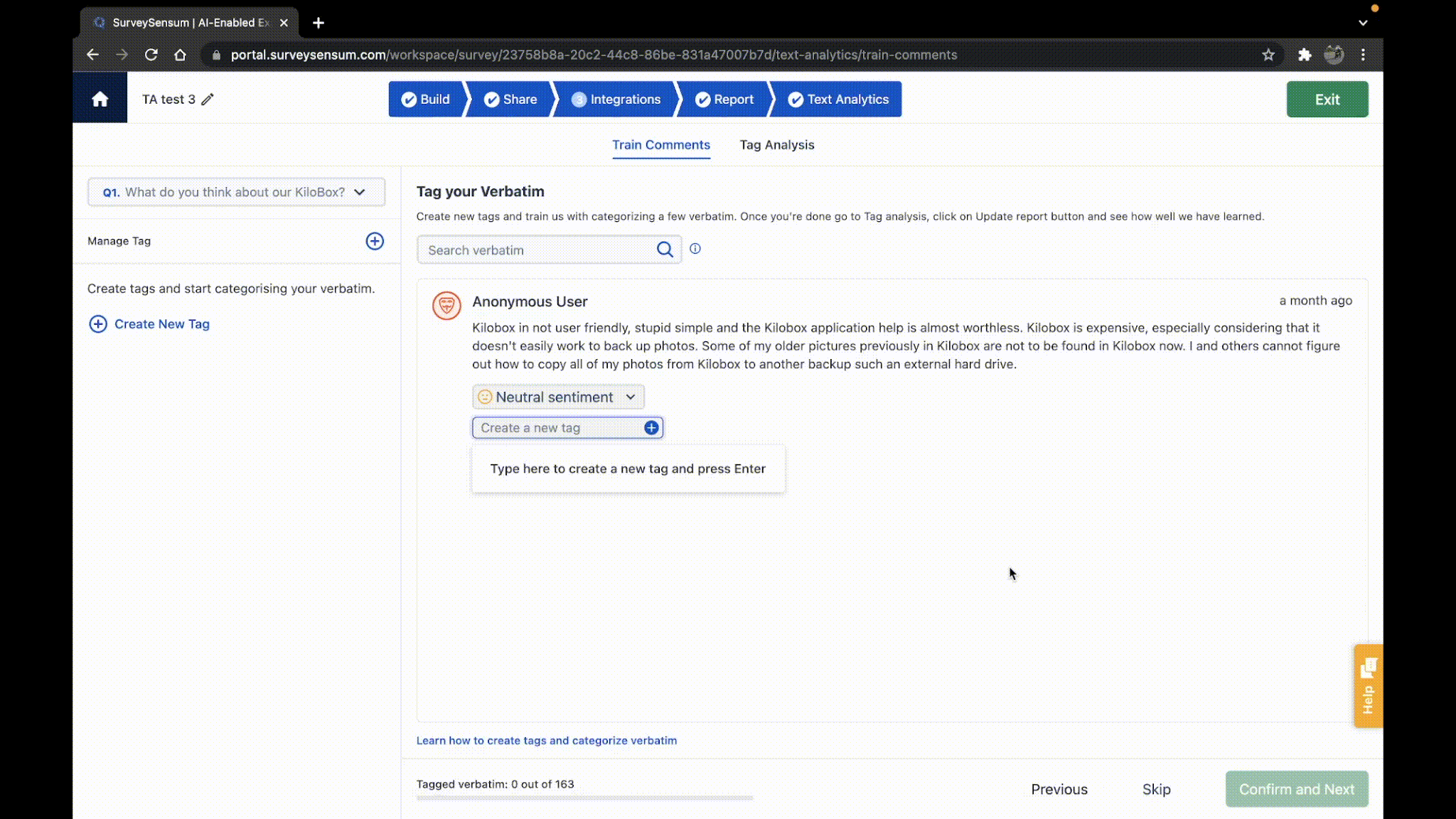Innovative Team Collaboration: 3 Tools for Seamless Project Management
Read More

Do you know that 88% of online customers don’t return to a website after a poor user experience? That’s a huge chunk of potential business loss, right?
That’s why offering a seamless experience is crucial to keeping visitors engaged and returning for more.
But, how?
Through website feedback – a compass guiding you toward satisfied customers and higher profits.
Website feedback is like having a direct conversation with your customers. It unveils their preferences, pain points, and desires regarding your website. By paying attention to this feedback, you can transform your website into an experience that caters directly to their needs.
Explore these 13 best practices for website feedback surveys. Let’s make your website a place customers would love to visit and return to!
Here are the 13 best practices for website feedback to help you gather valuable insights and enhance the customer experience while driving business growth:
Question yourself – what is it that you want to achieve from website feedback?
To set feedback goals, pinpoint specific areas for improvement, such as user experience, conversion rates, or brand perception. By defining these areas, the purpose of collecting website feedback becomes clearer.
To identify these goals:
In essence, setting the game plan for defining feedback goals lays the foundation for a successful and effective feedback implementation process.
Intuitive and easy-to-fill feedback forms can significantly impact the quality and quantity of insights gathered from users.
Here are actionable points to ensure your feedback forms hit the mark:
Ever wondered how to open up more avenues for collecting valuable website feedback?
Think of it like this: your website is your home, and there are multiple doors for your visitors to knock on and share their thoughts.
So, let’s explore the different ways you can invite your customers in for a chat:
1. On-Site Feedback Channels
2. Off-Site Feedback Outreach
Around 80% of businesses report that implementing live chat has boosted sales, increased revenue, and enhanced customer loyalty within their operations. This compelling statistic underscores that incorporating live chat can significantly improve your business growth and customer relationships.
Integrating live chat features into your website allows you to engage with users in real-time, providing a direct channel for immediate feedback. When users have questions, concerns, or thoughts while navigating your site, live chat enables you to address them promptly.
This real-time interaction not only enhances user experience but also provides you with valuable insights into their needs and preferences.
How to make the most of the live chat:
According to a survey, 80% of business leaders note that personalized experiences lead to consumers spending an average of 38% more.
Adding a personalized touch to your feedback can create a more engaging feedback experience.
Here’s how you can personalize your feedback requests based on customer behavior and preferences. :
Imagine you bought a new refrigerator for your home, and on the same day, the brand sends a survey to you asking, “Do you like our product? Or would you recommend our product to your family and friends? We know you’ll ignore it. Because you have yet to be aware of the quality or functionality of the product, so you can’t recommend it to any other person.
But, if they asked, “Rate your delivery experience with the product,” you can answer it.
Now, you understand how crucial the timing is when sending a feedback survey.
That’s why it’s imperative to understand which questions to be asked at which touchpoints.
Asking the wrong questions either leads to low response rates or irrelevant feedback!
A dedicated CX Consultant comes along with the SurveySensum feedback platform to help every step of the way – from which questions to use to how to analyze the feedback and take action on it.
Launch Website Feedback Program with SurveySensum
Here’s the truth: People are likelier to give open and honest feedback if they know it’s confidential.
It is crucial to protect your customers’ data privacy and security by handling personal information responsibly.
Focus on encouraging open and honest feedback by assuring customers of anonymity. It can make customers more comfortable sharing their thoughts, even if they have concerns or criticisms.
For instance, the popular job and recruiting site Glassdoor allows users to leave anonymous reviews on current and previous companies. This anonymity encourages employees to share their experiences openly, whether positive or negative, without revealing their identities.

Are you curious about a smart way to boost feedback from your website customers? Consider incentivizing your customers with rewards, discounts, or offers to encourage feedback submissions.
Here’s how to do it:
For example, you run an e-commerce website, and you’re looking to enhance your customer feedback. By implementing an incentive program, you offer customers a chance to win a gift card, perhaps from Amazon or Starbucks, every time they share their feedback. It encourages customers to participate and aligns with their preferences for popular and widely appealing rewards.
This creates a win-win situation – customers get rewarded for their input, and you get valuable insights to improve your website.
One of the major challenges of the companies that gather customer feedback is – they dont take action on it. Mostly because they don’t know how to!
Customer feedback is the gold lying around, waiting for you to be explored. So dive into it to really understand what your customers are saying.
Here’s what you can do –
Leverage the power of the text analytics tool.

You don’t need to manually tag every response. This tool leverages machine learning and tags thousands of responses in just a few seconds. ‘Without any manual coding!’
And gives you top trends and sentiments for you to work on.
For example, customers have provided feedback on your latest app update. By categorizing feedback into areas like “Bugs,” “customer Interface,” and “Performance,” you can pinpoint the specific issues and prioritize them.
Improve your website’s customer experience with SurveySensum
You’ve got a bunch of feedback, and it’s time to do something meaningful with it.
Start by acknowledging and responding to customer feedback promptly. It’s like having a conversation with a friend. If someone tells you what’s bothering them, you don’t just nod and move on. You acknowledge their concerns.
Next, prioritize the feedback-driven changes. Think of it like this: not every feedback is the same. Some changes are quick wins, while others take more time and resources. It’s crucial to figure out what changes will have the most significant impact and align them with your overall business goals.
Lastly, don’t forget about closing the loop after analyzing the feedback. Users have shared their thoughts, and now it’s time to act on their feedback and provide them with a solution or surety that they’re being heard. In a simpler way, let them know that their feedback matters. Communicate the changes you’ve made based on their insights. It’s like saying, “Hey, you told us, and we listened. Here’s how we’ve improved things because of you.”
81% of high-performing customer support teams ensure their communication with customers is focused towards relationship-building. That’s why, when we say, “Keep interactions human,” what we mean is, talk to your customers with empathy! In a world dominated by technology, it’s easy to forget that people are on the other side of the screen.
So, treat your customers with empathy, understanding, and genuine appreciation for their feedback. It’s like having a friendly chat over coffee but in the digital world. Your customers will appreciate the personal touch, and it can go a long way in building strong connections.
Here are some tips to humanize your conversations with the customers:
Measuring the impact of action is like checking if the changes you’ve made are hitting the bullseye. It’s not about numbers and graphs; it’s about understanding if the actions that you’ve taken are making any real impact!
So, how do you do it?
Once you’ve got these numbers, start making decisions based on the feedback-driven changes you’ve made. And the best part? You keep refining your website based on those invaluable customer insights.
Iterating and improving your website feedback process is crucial for ongoing growth and success. It ensures that your approach remains effective, responsive, and aligned with evolving business needs.
Here’s what you can do –
By consistently iterating and improving your feedback process, you create a dynamic feedback loop that not only addresses current challenges but also positions your organization for continuous enhancement and long-term success.
Customer feedback is crucial for businesses to grow. Surveys help gather information from customers about products and services.
But, to get the right details from the feedback, make sure your surveys ask the right questions. Customize your survey questions based on the information you need from customers.
Now, you might be thinking, “I’m ready to implement these best practices for website feedback surveys, but how do I get started?” Well, here’s where SurveySensum comes in. We can help you collect, analyze, and act on valuable customer insights. Take that first step toward improving customer experiences and boosting your business.
